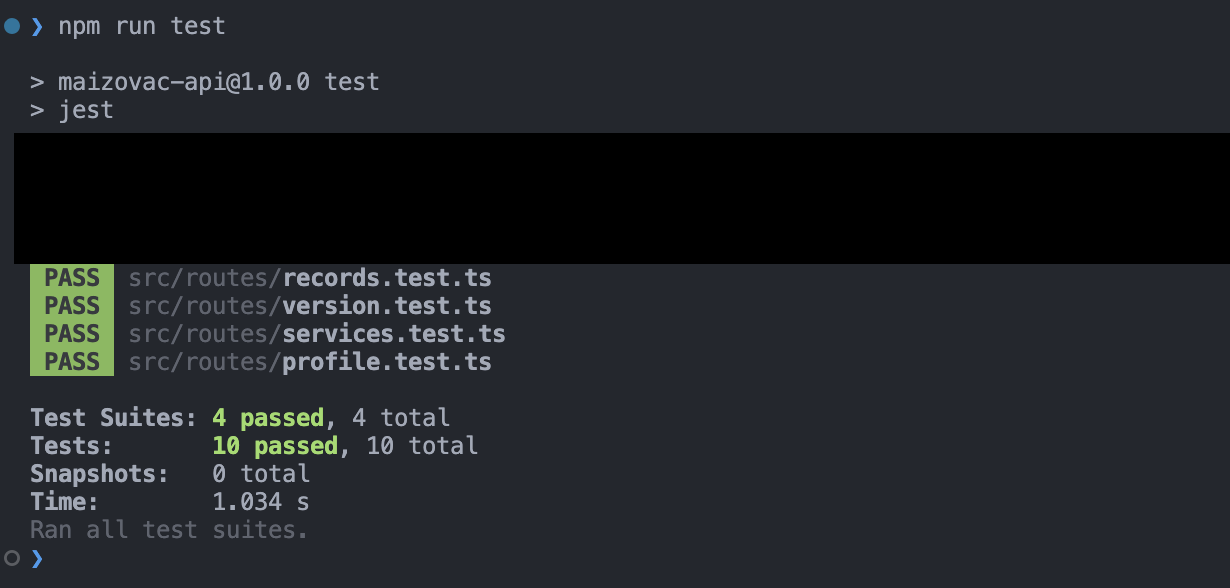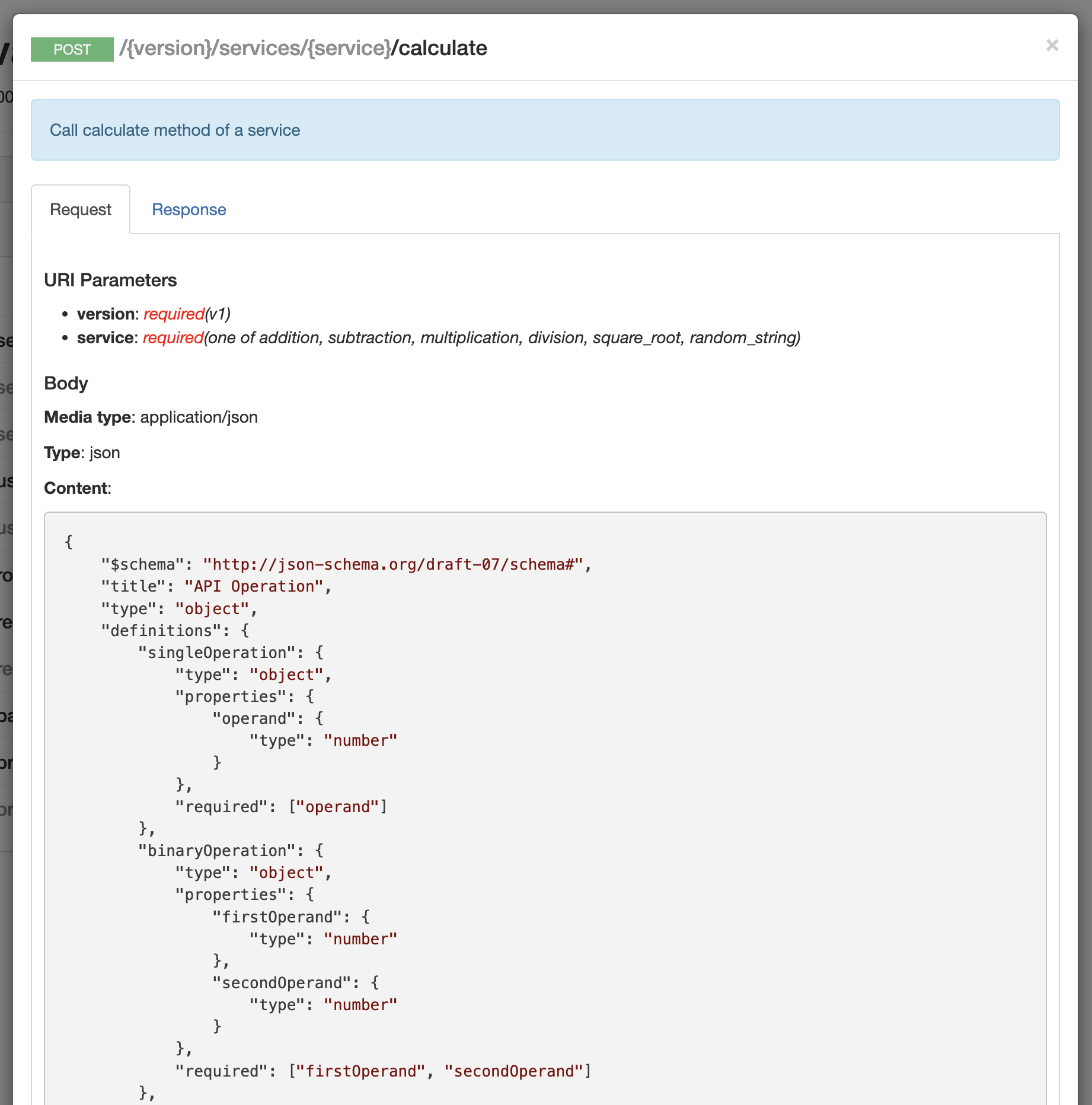Service calculator server with the 6 basic operations provided in a [REST API].
- Authentication with Auth0 and JWT
- Services:
- addition
- subtraction
- multipication
- division
- square root
- random string (external provider)
- Keep track of all the service executions made by the user
- Allow changing the status of the services
- Displays a table with all the transactions made by the users
- Balance/Credit starts in $10 and decreases as the User requests for a service
- Records can be deleted so that the user balance can be restored
- Services are not removable, they can only be edited and disabled
- Express.js A Node.js framework that provides a robust set of features for web and mobile applications.
- Auth0 A third party framework to handle user authentication and RBAC.
- RAML A simple but powerful syntax for modelling APIs.
- Docker Compose A tool for defining and running multi-container Docker applications.
- Sequelize A promise-based Node.js ORM for Postgres, MySQL, MariaDB, SQLite and Microsoft SQL Server. It features solid transaction support, relations, eager and lazy loading, read replication and more.
- PostgreSQL A powerful, open source object-relational database system with over 30 years of active development that has earned it a strong reputation for reliability, feature robustness, and performance.
- Jest A delightful JavaScript Testing Framework with a focus on simplicity.
Step 1: Set env variables (or .env file)
# Database env variables
export DATABASE_HOST=db
export DATABASE_NAME=postgres
export DATABASE_USER=postgres
export DATABASE_PASSWORD=example
# API env variables
export PORT=3000
export AUTHORIZATION_DOMAIN=maizovac.us.auth0.com
export AUTHORIZATION_AUDIENCE=maizovac-api
export DB_CONNECTION_STRING=postgres://${DATABASE_USER}:${DATABASE_PASSWORD}@${DATABASE_HOST}:5432/${DATABASE_NAME}
# Schema migration env vars (seed)
export DEFAULT_USERNAME=root@example.comAUTHORIZATION_DOMAIN, AUTHORIZATION_CLIENT_ID and AUTHORIZATION_AUDIENCE all are needed as part of the Auth0 service, follow this instructions on how to obtain those values. A Auth0 account will be needed.
Step 2: Run the server
# install dependencies
$ npm install
# (Re)creates, starts, and attaches to containers for a service (see stack.yml for more details)
docker-compose -f stack.yml upStep 3: Migrate and Seed database
# Open shell inside docker container
docker-compose -f stack.yml exec api sh
# Run migration and initial seed
source .env
npm run db-migration --production
npm run db-seed --production- Main endpoints are tested with Jest via:
npm run test- API simple live documentation:
- Expected request/response body:



